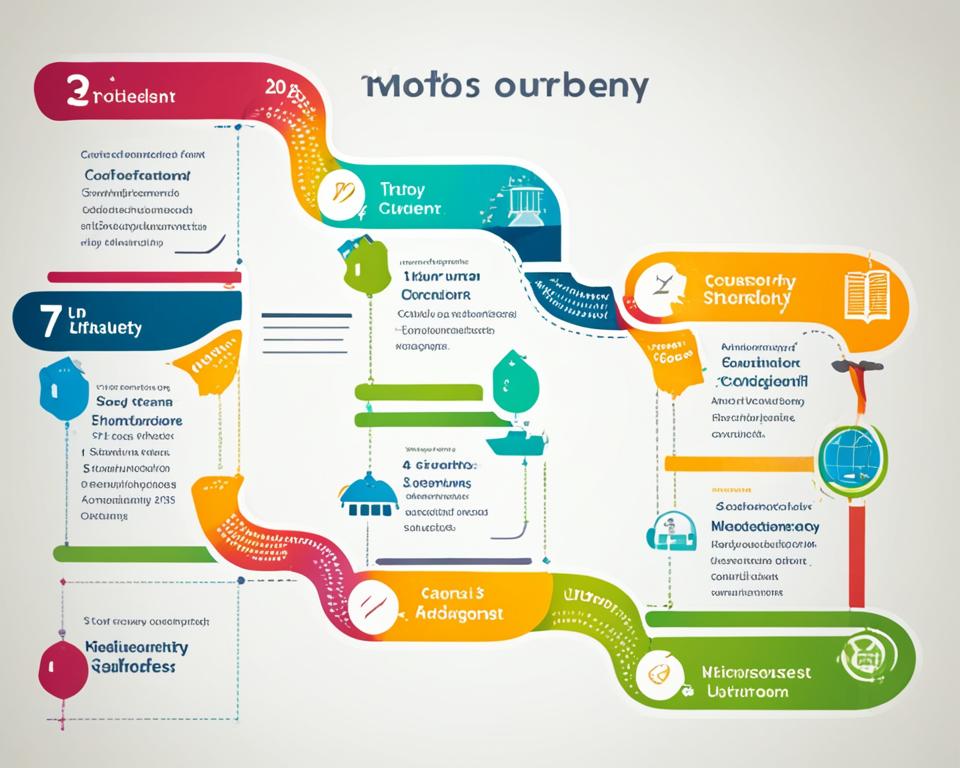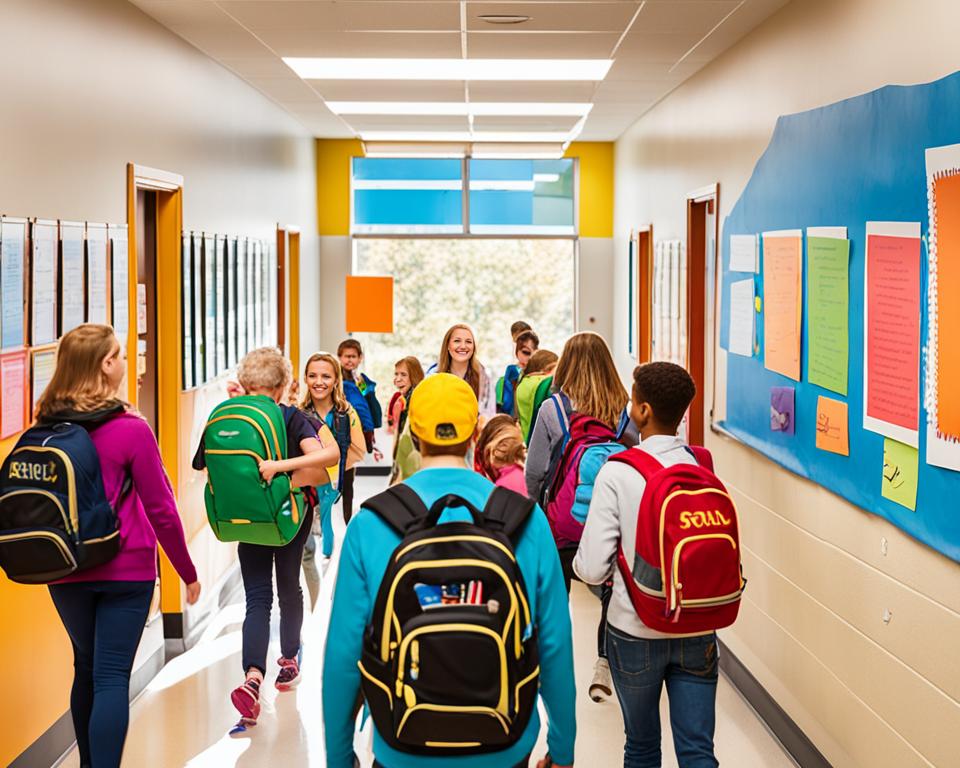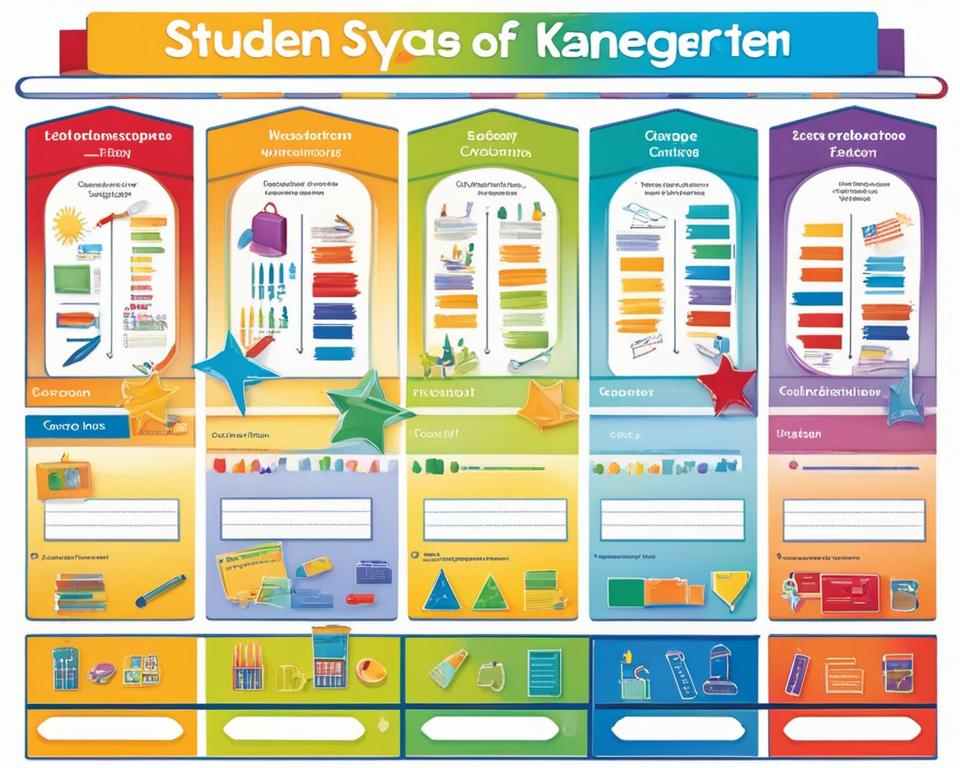I’ve always been intrigued by the USA’s education system. It ranges from elementary schools to top universities. This journey shows how knowledge and growth shape our lives. In this guide, we’ll dive into the details of this system. We’ll see how it affects students all over the country.
Our education system mirrors our diverse society. It’s made up of public and private schools, all working together. This guide is for parents and students alike. It aims to help you make smart choices and reach your goals.
Key Takeaways
- Gain a comprehensive understanding of the US education system from kindergarten to college
- Explore the differences between public and private schools, and their respective roles in shaping the educational landscape
- Understand the importance of curriculum standards and standardized testing, and their impact on student learning
- Discover the wealth of extracurricular activities available to enrich the student experience
- Learn about the college admissions process and explore the options for student financing
Understanding the USA Education System: From Kindergarten to University
The United States education system is complex, offering various paths for students from early childhood to university. We’ll look at the main stages of education in America. These stages help shape the academic journey of young Americans, from kindergarten to getting a university degree.
Public schools are at the heart of the American education system. They serve most students and offer a wide curriculum. This curriculum helps students learn from elementary to secondary levels. Private schools also exist, offering special educational paths or religious teachings.
Students move through their school years and find many extracurricular activities. These activities include sports, clubs, and volunteering. They help students grow personally, build leadership skills, and make memories that last a lifetime.
Going to college is a big step for many American students. The college admissions process and student loans are key to getting into university. They open doors to many academic and career paths.

To understand the American education system, we must look at each stage closely. We’ll explore public schools, private institutions, and the impact of extracurricular activities. This will guide you through the path to a successful college education.
Public Schools: The Backbone of American Education
Public schools are key to the American education system, serving most students. They help shape the academic and personal growth of our young people. They offer a wide curriculum to prepare students for the future.
Curriculum Standards and Grade Levels
Public school education is built on curriculum standards and grade levels. These standards set the knowledge and skills students should learn at each grade. They ensure learning moves forward smoothly from basic subjects in early grades to specialized ones in high school.
This approach aims to give students a well-rounded education. It prepares them for a lifetime of learning.
Standardized Testing: A Controversial Necessity
Standardized testing is a topic of debate in public schools. These tests aim to check student progress and help schools and policymakers. But, their effect on learning has sparked a lot of discussion.
Some say too much focus on tests can make learning too narrow. Others see them as key for accountability and finding areas to improve.
Despite debates, public schools keep working with curriculum standards, grade levels, and tests. Their main goal is to help students reach their best potential.

“Education is not the filling of a pail, but the lighting of a fire.” – William Butler Yeats
Private Schools: An Alternative Path
Private schools are a choice for families looking for a special or customized education. They offer a different view on how to learn in the U.S. These schools meet various needs and likes, giving a special look at education.
Private schools usually have fewer students in each class. This means students get more one-on-one time and a learning space that feels more personal. They might also have special courses, like those focused on religion, science, technology, engineering, and math (STEM), or the arts. This can be great for families who want their child’s education to match their values and goals.
Also, private schools look at more than just grades when they decide who to accept. They consider things like extra activities, letters from teachers, and personal talks. This can help students who don’t do well on tests but have other talents.
But, going to a private school can be expensive. Prices can go from a few hundred to more than $50,000 a year, depending on the school and where it is. This can make it hard for many families to afford it. They need to think about their budget and see what help they can get.
Even with the high costs, private schools are important in the U.S. education scene. They give families a way to shape their child’s learning and help them grow in many ways.
Extracurricular Activities: Enriching the Student Experience
Education in the United States goes beyond the classroom. It offers students a wide range of activities that help them grow. These activities include sports, clubs, and volunteering. They are key in making the student experience richer.
Sports: A Pathway to Teamwork and Discipline
Sports are a big part of American schools. They let students improve their athletic skills and learn about teamwork and discipline. Whether it’s basketball, football, or track and field, sports teach students important life lessons.
These lessons include teamwork and staying fit. They help students grow beyond the sports field.
Clubs: Exploring Passions and Building Leadership
Clubs give students a chance to follow their interests and improve their skills. There are clubs for academics like debate and science, and for the arts like art and drama. These clubs help students learn new things, become leaders, and work with others.
Volunteering: Giving Back to the Community
Volunteering lets students help their communities. They can tutor kids, clean parks, or raise money for charities. This helps them feel responsible and teaches them to care for others.
| Extracurricular Activity | Benefits |
|---|---|
| Sports | Teamwork, discipline, physical fitness |
| Clubs | Skill development, leadership, collaboration |
| Volunteering | Social responsibility, community engagement, altruism |
By taking part in different activities, students in the United States can grow personally and become leaders. They also learn to engage with their communities. This makes their education richer.
“Extracurricular activities are not just a pastime; they are a crucial component of a well-rounded education, shaping students into well-rounded individuals.”
The Road to Higher Education
The path to higher education is both thrilling and challenging. It’s filled with opportunities and hurdles. Navigating college admissions can be tough, but with the right strategies, we can increase our chances of getting into our dream school.
College Admissions and Student Loans
Creating a strong college application is all about balance. It’s about showing off your academic achievements, your extra activities, and how you’ve grown as a person. We’ll look at what colleges look for, like test scores and essays. We’ll also cover the different ways to pay for college, like scholarships and loans, to make sure education is affordable for everyone.
We’ll learn from students who have made it through college admissions and found ways to pay for school. By understanding the process and the help available, we can make smart choices. This way, we can set a course for the future we want.

